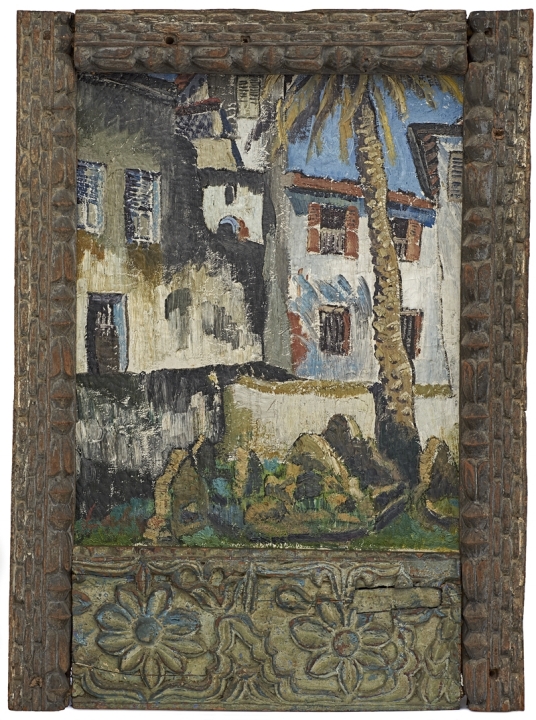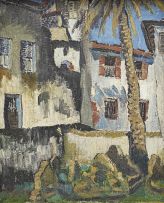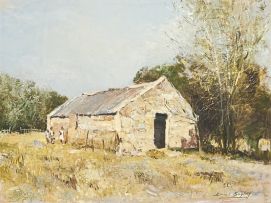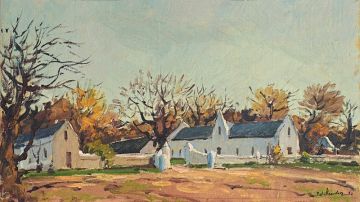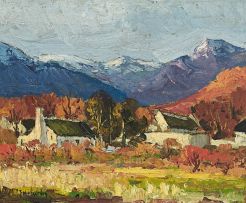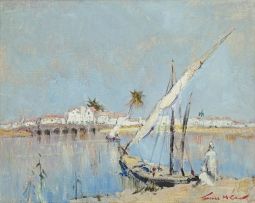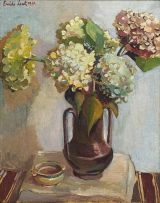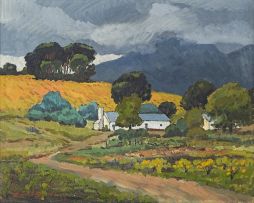Important South African & International Art, Furniture, Decorative Arts & Jewellery
Live Auction, 13 October 2014
Important International & South African Art Evening Sale
About this Item
signed and dated 47
Notes
Centuries of Indian Ocean travel and trade between Africa, the Arabian peninsula, the Indian subcontinent and South-East Asia have contributed to the distinctive Swahili culture of East Africa's port cities and islands. It's not surprising that they have captured the imaginations of travellers and dreamers alike and inspired many artists including South Africans Irma Stern, JH Pierneef, Alexis Preller, Terence McCaw and Trevor Coleman, to name just a few. Freida Lock was no exception.
Between 1947 and 1949 she enjoyed an extended stay of eighteen months travelling and painting in Zanzibar. "Descriptions of her stay in Zanzibar, reported in The Star in 1949 and recorded in Johannes Meintjes's diary, indicate that, unlike most foreigners:
Lock became known to the Arab community and was invited to Arab houses, where she became acquainted with their culture at first hand. The jostling markets, the dhow harbours, the music and singing at wedding feasts fascinated her, appealing to her passionate nature and love of the exotic. The winding streets, deep doorways and shuttered windows, and the locals, whom she thought were some of the most beautiful people she had ever seen, are all captured in her paintings."1
With all the knowledge gained from her time there and a deep appreciation of its peoples and cultures, Lock captured the character of Zanzibar - homes abutting one another, whitewashed walls rendered in a restrained palette of creamy surfaces and olive shadows that are echoed in the date palm with its textured trunk. Dramatic contrasts of light and dark that add gravitas to the subject are balanced by a brilliant blue sky that peeps through the buildings, its radiant colour enhanced by its proximity to the ochre ceramic-tiled roofs with their wide eaves.
The impressive frame is both a cultural construct and framing device through which to view the scene. The carved doors and windows of Zanzibari homes reflected the wealth, culture and social position of their owners. The designs are redolent with symbolic significance and invocations for benign protection. Geometric designs such as those on the vertical supports may indicate that the homeowner was proficient in mathematics and could offer his services as an accountant. Ropes that may be associated with the fishing trade are often found on the outermost strip of door frames where they are intended to keep evil forces at bay. While the more abstract designs are evidence of the early impact of Arabic culture, the lotus flowers, signifying regeneration, are often found on nineteenth-century doors reflecting later Indian influences. The frame, with its rich history and cultural references, thus becomes a window onto a world whose powerful imaginative stimulus has been the stuff of dreams.
1. Johannes Meintjes. Die Dagboek van Johannes Meintjies, Molteno: Bamboesberg-uitgewers, 1961, Vol 2, page 63, 20 November 1948; quoted in Emma Bedford. (1993) 'Freida Lock', Our Art, vol 4, Pretoria: Foundation for Education, Science and Technology, 1993. Page 38.
Provenance
Gift from the artist to the current owner's family
